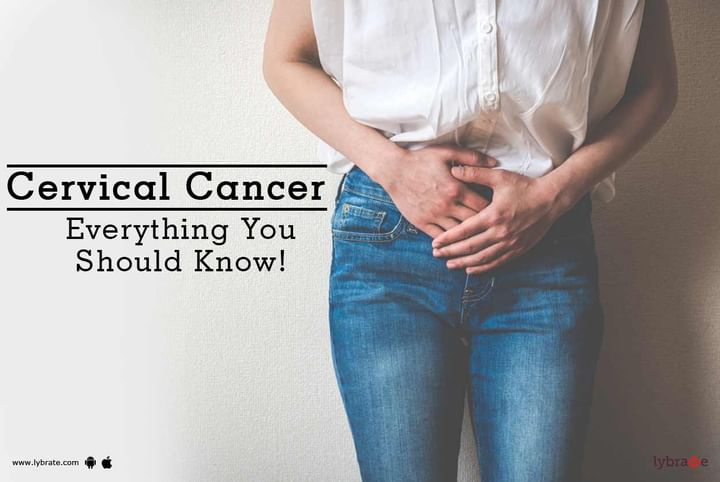Cervical Cancer - Everything You Should Know!
Cervical cancer is a malignant neoplasm originating in the cervix uteri. Cervical cancer is one of the most common cause of cancer in women. Lack of screening programs in the developing world means that the disease is not identified until it is too late, resulting in higher mortality.
Symptoms :
-
Asymptomatic (without any symptom)
-
Vaginal bleeding on touch
-
Abnormal vaginal bleeding
-
Intermenstrual bleeding
-
Bleeding after coitus
-
Menstrual bleeding that is longer and Heavier than usual.
-
Bleeding even after menopause.
-
Moderate pain during sexual intercourse and vaginal discharge in advanced disease, metastases may be present in the abdomen, lungs or elsewhere.
Causes:
(i) The central cause of cervical cancer is HPV - Human Papilloma Virus.
(ii) It is transmitted through sexual contact.
(iii) Low-risk type virus may cause genital warts.
(iv) High-risk type may cause precancer or cancer
(v) Only women with persistent HPV are at risk.
Human papillomavirus (HPV)
HPV is cause of 70% of cervical cancer globally.
Other risk factors: chlamydia infection, hormonal contraception, multiple pregnancies, exposure to the hormonal drug diethylstilbestrol, and family history of cervical cancer.
HPV vaccines
There are two HPV vaccines (Gardasil and Cervarix) which reduce the risk of cancerous or precancerous changes of the cervix and perineum by about 93%.
Treatment:
(i) Surgery (HYSTERECTOMY)(including local excision)
(ii) Chemotherapy in early stages
(iii) Radiotherapy in advanced stages.
Cancer screening: MOST IMPORTANT DIAGNOSTIC TOOL:
-
Pap smear can identify precancerous and potentially precancerous changes in cervical cells and tissue. The smear should contain cells from SCJ (squamocolumnar junction), Transformation zone and endocervix. Ayre’s spatula and endocervical brush are used. Cells are spread on slide and fixed immediately. The treatment protocol depends upon the findings of the smear report. Liquid-based cytology can also be performed now.
-
Cervical screening programs have reduced the incidence of invasive cervical cancer by 50% or more.
-
Colposcopy- a magnified visual inspection of the cervix aided by using a dilute acetic acid (e.g. vinegar), colposcopy guided Biopsy, Endocervical curratage, Pelvic examination are also important tools for screening of cancer.
-
The screening intervals are:
Guidelines According to Age and Reproductive Status
-
After a woman becomes sexually active, pap smear testing needs to be done after every 2 years.
-
After that, if you get 3 consecutive normal pap smears (that is, three normal tests in a row), the doctors may consider spacing this test to every 3 years.
-
After 65 years of age, you may stop.
However, doctors may recommend for more frequent testings in any of the following conditions if:
-
You are HIV positive
-
You have inflammation of cervix in previous pap smear screening test.
-
You are nutritionally deficient and weak.
-
Immunocompromised state, like after radiotherapy, chemotherapy, or after a lone term steroid treatment.
-
Your mother was exposed to DES (diethylstilbestrol) while pregnant.
New HOPE for CERVICAL CANCER:
Cervarix and Garsasil are vaccines against certain types of cancer-causing human papillomavirus.
HPV is a virus, usually transmitted sexually, which can cause cervical cancer.
Gardasil, also known as Gardisil or Silgard or recombinant human papillomavirus vaccine [types 6, 11, 16, 18] is a vaccine for use in the prevention of certain strains of human papillomavirus (HPV), specifically HPV types 6, 11, 16 and 18. HPV types 16 and 18 cause an estimated 70% of cervical cancers, and are responsible for most HPV-induced anal, vulvar, vaginal and penile cancer cases. HPV types 6 and 11 cause an estimated 90% of genital warts cases.
Cervarix is designed to prevent infection from HPV types 16 and 18, that cause about 70% of cervical cancer cases.
Administration
Immunization with vaccine consists of 3 doses of 0.5-mL each, by intramuscular injection according to the following schedule: 0, 1, and 6 months. Vaccine is available in 0.5-mL single-dose vials. You may contact to nearest gynecologist for further information about vaccines.
HOW DOES AYURVEDA HELP?
Ayurveda has definite protective influence over the killing disease. Prana is ultimate force that maintains our vitality. In Ayurveda this is named as Vata. We have to balance our Vata to keep away from killing cancer. Cancer prevention is targeted at creating balance and harmony through AAHARA, VIHARA, DINACHARYA RUTUCHARYA , RUTUSANDHICHARYA, SADVRUTA, PRANAYAMA, RASAYANA SEVAN, PANCHAKARMA AACHAR RASAYANA, AND ANTICANCER HERBS. Research has shown that some ayurvedic herbs has anticancer activity. Curcumin, inhibit tumor-promoting enzymes and interfere with the growth of cancerous tumors. As a powerful antioxidant, curcumin neutralizes free radicals that increase the risk of cancer. So HARIDRA TAILA pichoo (A sterile tampoon soaked in oil kept in vagina) is effective.
- Ginger not only kills cancer cells, it also prevents them building up resistance to cancer tretment.
- Fenugreek seeds were experimentally shown to protect against cancers of the breast, cervix and prostate cancer.
- There are many Ayurvedic herbs that have anti-carcinogenic properties, such as Amla, Ashwagandha, Triphala, Guduchi, Tulsi, Neem, and Brahmi.
- The role of the mind in healing must be emphasized as mental disturbances are a more subtle cause than the physical imbalances in the doshas.
- Spiritual healing is the process of removing or healing our karma, which plays a role in all disease.
- So mental and spiritual both the states are important for curing any disease which is explained only in ayurveda.
It is important to continue looking for effective ways to expand screening for each women for reducing cervical cancer morbidity and mortality worldwide. So here we all should screen, prevent and treat cervical cancer to improve the quality and logitivity of life of women.



+1.svg)
